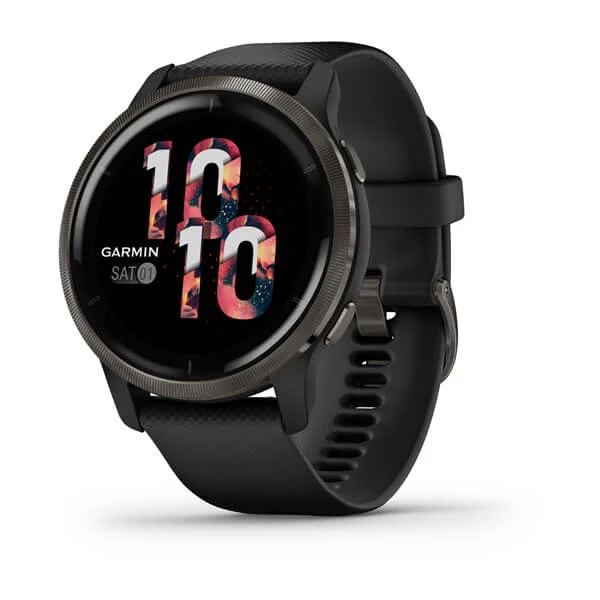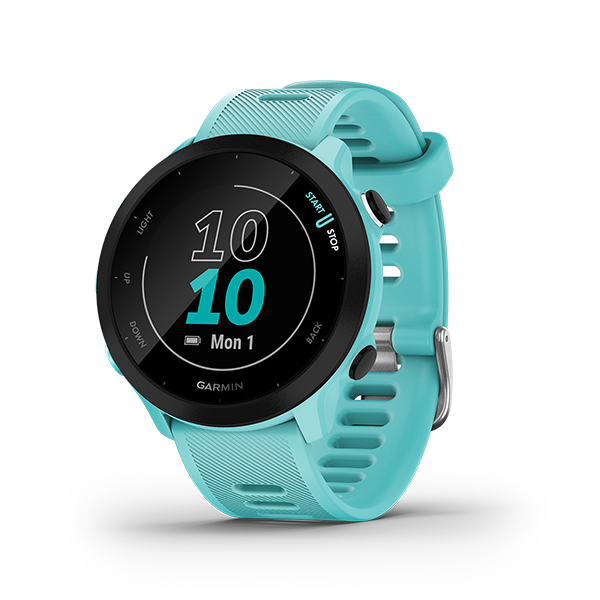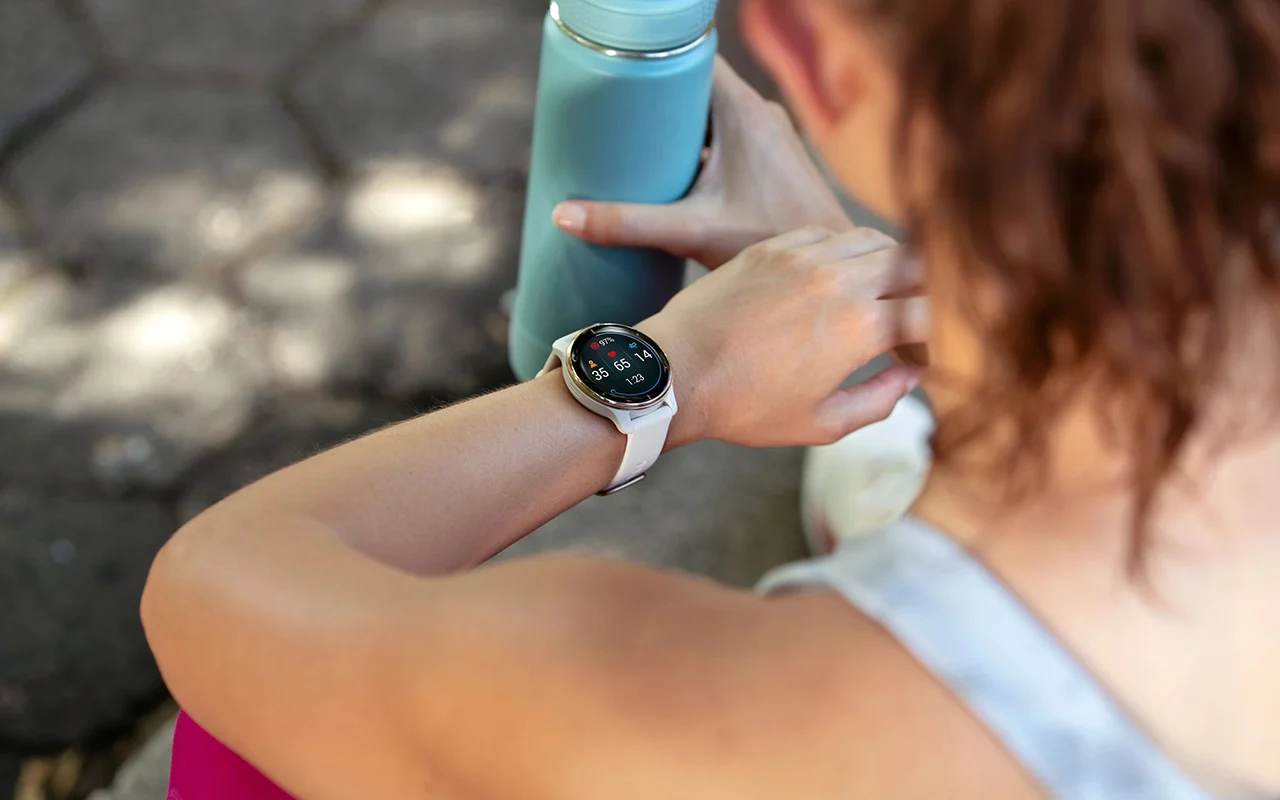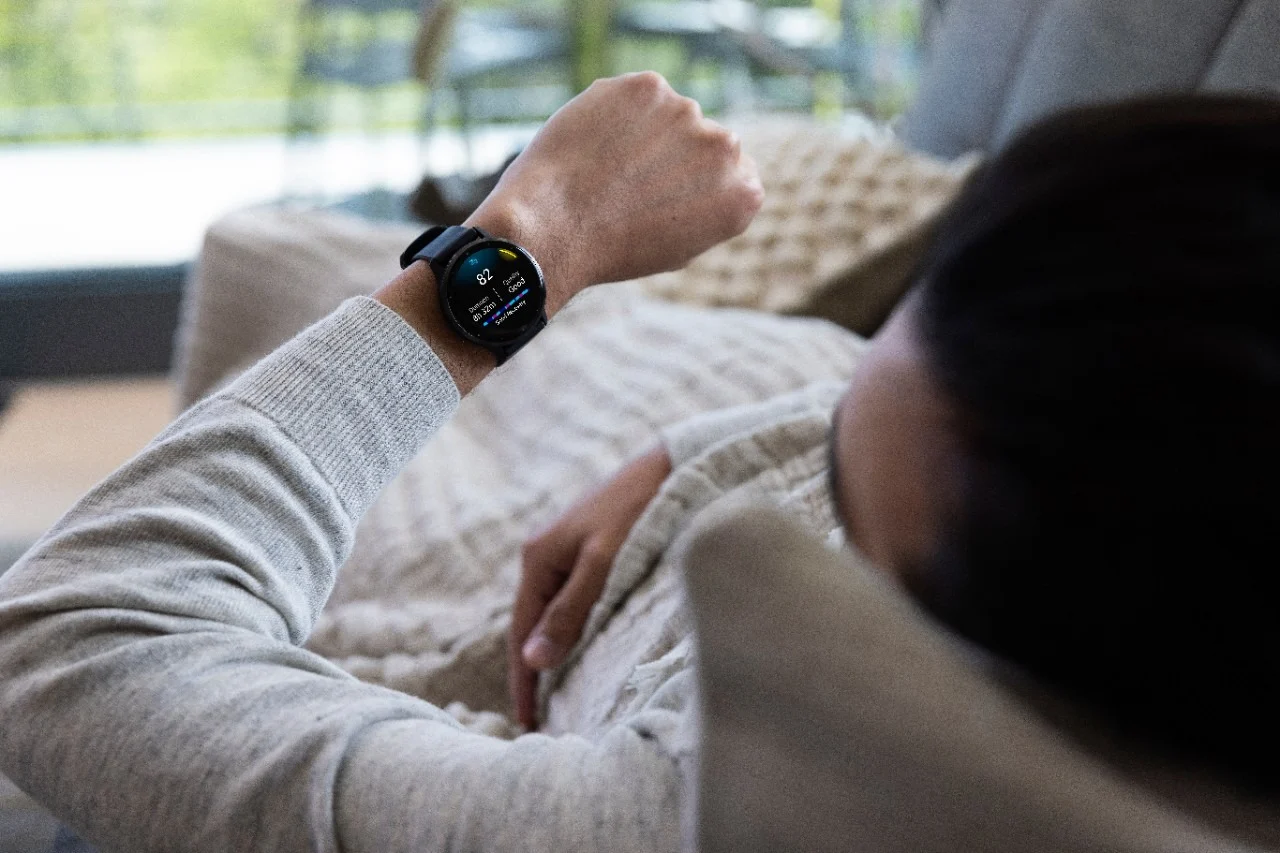
Garmin Users with Higher Activity Levels Have Lower Resting Heart Rates
A data sample from Garmin Connect user accounts shows that the more active a person is, the lower their resting heart rate.
Looking down at the Garmin smartwatch on your wrist and seeing what looks like an abnormally low resting heart rate can cause a bit of concern. But data obtained from a sample of Garmin Connect™ users shows that a low resting heart rate could indicate an increased level of cardiovascular fitness.
What is resting heart rate?
Your resting heart rate is the number of times your heart beats per minute (bpm) while your body is in a state of rest — typically when you are sleeping or lying in bed after waking up. A quick online search will convey that a “normal” resting heart rate for healthy adults should be somewhere between 60-100 bpm, depending on factors like gender and age.
How to calculate your resting heart rate
Your Garmin smartwatch will calculate your resting heart rate for you. Directly on your wrist, you can see your average resting heart rate over a 7-day period, but it’s important to open your Garmin Connect app to get the fuller picture. Looking at one day or one week only doesn’t always give the full story — factors like illnesses or infections or abnormally active or inactive weeks can skew the data, so examine your averages over the course of a month or a year for a more accurate number.
If you see that your average resting heart rate really is consistently lower than 60, don’t panic. This can be a good thing.
Why do athletes have a lower resting heart rate?
Vigorous exercise strengthens the heart muscle, which ultimately means it’s more effective at pumping blood throughout your body. In general, stronger hearts can pump the same amount of blood in fewer heartbeats, while weaker hearts need to pump more times to achieve the same volume. As a result, athletic individuals — like runners, for example — tend to have lower resting heart rates.
But you don’t have to take our word for it. A data sample obtained from users who allowed tracking of their data in Garmin Connect, an interactive tool used by millions of fitness lovers worldwide, makes the correlation crystal clear. The more active you are, the healthier your heart becomes — and the easier you make it for it to do its job.
If you aren’t an athlete or don’t engage in regular, rigorous fitness exercises, a low resting heart rate can indicate a problem. If you aren’t active but have an abnormally low resting heart rate, this may be something to discuss with your doctor because this can be an indicator of a heart rhythm disturbance called bradycardia or other conditions.
Cardio activities and resting heart rate
It’s not shocking that regular, vigorous cardiovascular exercise is good for you. Garmin Connect users love to run, bike, swim and more — activities that provide an abundance of health benefits. Because of the popularity of these activities and the enormous value added to your heart health specifically by performing cardio, we decided to look at the number of cumulative hours spent running, biking and swimming as they correlated to the user’s average resting heart rate. The results are clear — up to 15 hours, the more time a user spent doing these activities, the lower their average resting heart rate measured.
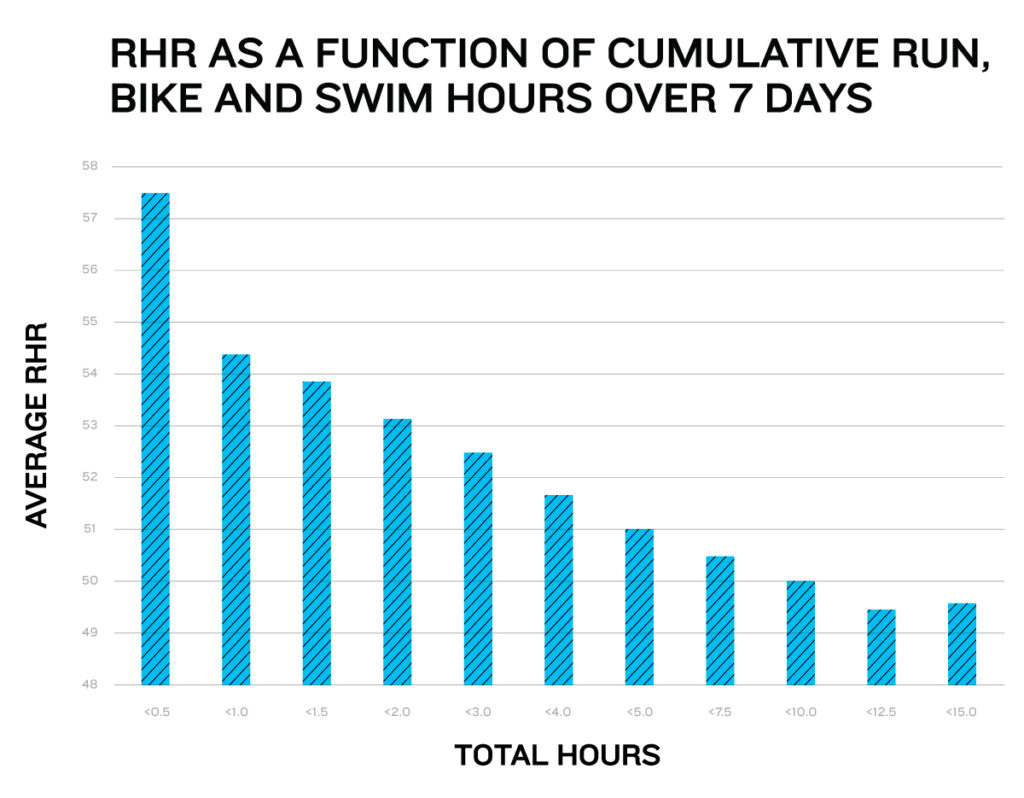
Total activity hours and resting heart rate
But what about people who like to perform activities outside of (or in addition to) running, swimming and biking? Don’t worry — we looked at those too. No matter which activity is your go-to within the Garmin Connect ecosystem — from kayaking to yoga, golfing to strength training — the correlation is still clear. The more time you spend being active, the lower your resting heart rate should be.
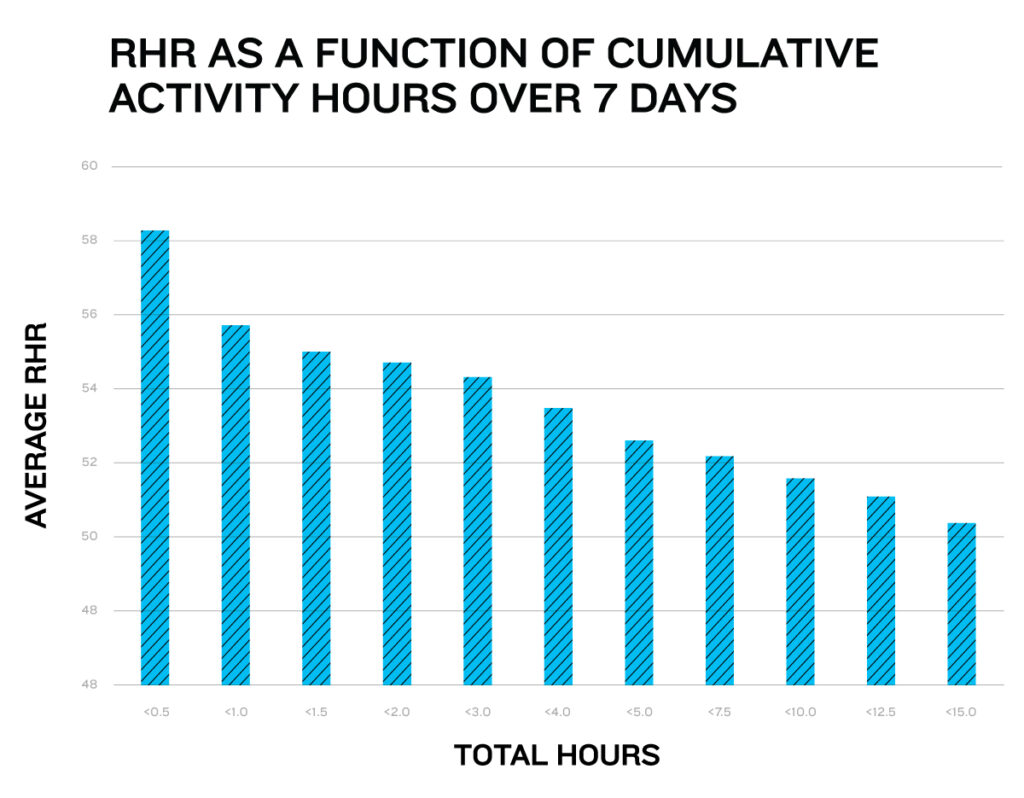
Daily step count and resting heart rate
Are you a fanatic about meeting your daily step goal? Or do you prefer to silence your move alerts throughout the day? Either is perfectly OK, but you might want to look at the data below if you aren’t putting up decent daily step counts on average. The more steps you can get in per day, the stronger your heart is … maybe a reminder to take a brief walk to the office kitchen to grab a glass of water is more beneficial than you thought.
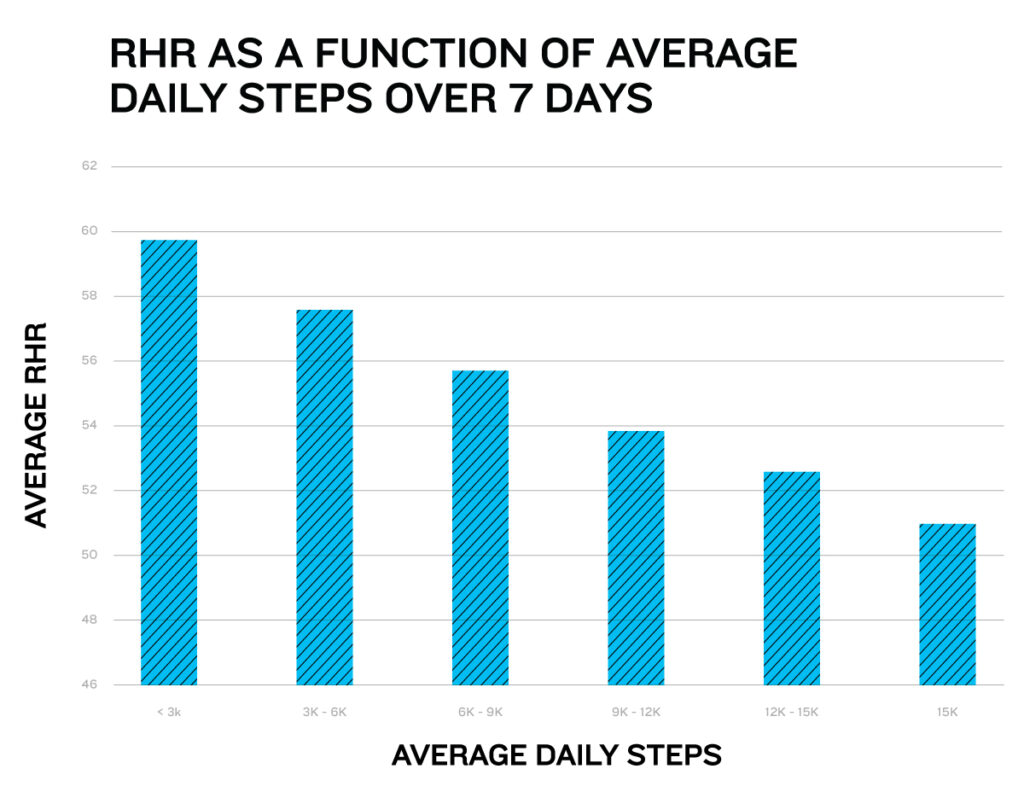
How can I improve my average resting heart rate?
The answer here is likely pretty simple — get moving! The above charts show that, for the average healthy adult, a more active lifestyle leads to a healthier heart. If you haven’t found an activity you’re passionate about yet, that’s OK. Garmin smartwatches have up to 37activity profiles to try, whether you’re seeking out that one hobby that’s going to define you moving forward or you just feel like mixing it up.
Please keep in mind, though, that everyone is different. If after reading this article you still feel like your resting heart rate is unusual, it’s important to consult your doctor as he or she will be able to work with you determine whether something is wrong.
Don’t have a Garmin smartwatch yet? That’s an easier fix — our range of smartwatches and fitness trackers are all available online and designed specifically to help you beat yesterday.
